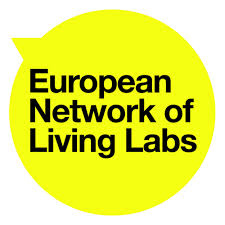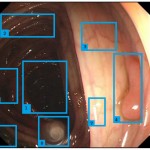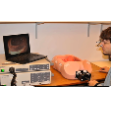ONGOING PROJECTS FUNDED BY THE EUROPEAN COMMISSION
| CommuniCity is a transformative citizen-centred project funded by the European Commission under the Horizon Europe programme. It will launch 100 tech pilots addressing the needs of cities and communities in Helsinki, Amsterdam, and Porto, through co-creation and co-learning processes. The project builds on recognized European and national innovation programmes, methods, living labs, and platforms. CommuniCity is working together with companies, tech providers and citizens to develop solutions to overcome digital and urban challenges. |
|
| Find out more |
 |
The Catalonia Digital Innovation Hub is a regional non-profit innovation ecosystem, formed by the main support agents for the digitalization of Catalonia, with the goal of promoting the technological transformation of small and medium enterprises (with a special focus on the industrial sector and technology suppliers), technological start-ups and public entities. The team at CVC coordinates with Eurecat the Node on AI. |
| Find out more |
 |
DT4REGIONS aims to create a European Platform for Regions to enable AI and Big Data collective solutions. It will be a unique challenge-based innovation platform for the development of tools and services of public interest. At the same time, it will enhance public administration efficiency and effectiveness in user-centric services. |
| Find out more |
 |
The ECIU University Research Institute for Smart European Regions (SMART-ER) is a research, innovation and education strong alliance, enabling all 12 ECIU University member institutions to jointly address complex societal challenges under the framework of the UN SDG11 (Sustainable cities and communities). |
| Find out more |
ONGOING PROJECTS FUNDING BY THE SPANISH GOVERNMENT
 |
ExperimentAI is a project developed and coordinated by the Computer Vision Center from the Universitat Autònoma de Barcelona (CVC-UAB) with the collaboration and funding of the Fundación Española para la Ciencia y la Tecnología (FECYT for its initials in Spanish) – Ministerio de Ciencia, Innovación y Universidades. |
| Find out more |
 |
Massive and Interactive Recognition of our Ancestors’ Natural and Digital Archives (MIRANDA) allows citizens to know the collective and evolving memory of their society while preserving their cultural and intellectual heritage. The vision is structured around the concept of Big Data of the Past extracting historical knowledge out of historical handwritten records, photographs, recordings…). The execution of the project is based in two pillars. First, the extraction of semantic information from heterogeneous types of document images (textual and non-textual) using the latest advances of handwriting recognition, machine learning and structural pattern recognition. Second, the inclusion of the users in the process, developing engaging experiences under social innovation methodologies, where the citizens are empowered in the extraction of knowledge from historical data. |
| Find out more |
ONGOING INTERNATIONAL TASK FORCES
 |
n this JRC–ENoLL Joint Working Group, we explore how living labs can be used for regulatory learning. We aim at fostering mutual learning and co-creation among the actors of the multiple helix model to address regulatory challenges and needs and leverage opportunities that derive from a changing innovation landscape. The activities focus on developing and promoting living labs as a participatory, evidence-based approach that can support co-creation and better regulatory governance of innovation and spur socio-technical and socio-economic transformation in societies. Key questions we want to answer: |
| Find out more |
 |
This project consisted of a 5-year Pillot development of a Laboratory infrastructure with the Living Lab approach, for the definition with the users of the potential new services of the Library of the Future. This is a root initiative in which researchers, artists and all the relevant stakeholders join their efforts for disruptive design of novel services and applications. This project is funded by CVC, UAB, Provincial Council of Barcelona and Municipality of Sant Cugat. The Library Living Lab belongs to the EU network of Living Labs ENoLL. After the 5-year Pilot in Volpelleres at the Metropolitan area of Barcelona, the SIAI team currently collaborates in the scalability of the process to the network of 230+ Public Libraries of the Provincial Council of Barcelona. |
| Find out more |
Past Projects
Basic and Oriented Research projects
| Implementation of an eye-tracker software solution which works on common setups consisting of a processing device (computer, smart phone, etc.) and an ordinary webcam (or smart phone camera). The proposed system provides a cheap alternative for applications where commercial eye-trackers are infeasible. This project is developing the open software standard OpenGazer. | |
| Find out more |
 |
Gaze-based interaction for augmented information on digital documentes. Webcam eye-tracking allows to expand the potential of Google Glass-type devices. The interaction research here is based on the study of the visual triggers and its potential responses for the modification of the multimedia items enriching the informative experience. This project has been granted with the Google Academy Award. |
| Find out more |
 |
(re)Valorisation of digital collection by video dj narratives and multimedia interaction. Users expanding the collections with their memories and creativity work. Sounds of peace modify posters of war by means of image processing tools. The collection is shared by a twitter feed. This project consist of an artistic interface in evolution, comprising different interaction models with increasing complexity. |
| Find out more |
 |
‘I am my own drawing’ is a project for the robust implementation of Enric Socias‘s software for gesture interaction. This software is used to create a collaborative story by using and animating the drawings created by the participants. The project is projected in a collaborative framework in order to break the physical barriers by means of joining children from different places in a common scenario. |
| Find out more |
 |
Automatic detection of colon cancer for quality assessment of colonoscopy. (Spanish Gov. Research Grant). This research activity endeavors the use of eye-tracking data to validate the areas of interest related to potential presence of colon cancer. |
| Find out more |
Partnerships
 |
The Endoview project is developing software tools and novel sensors to improve the quality of endoscopy procedures. |
| Find out more |
